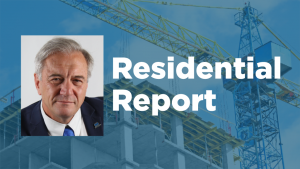A new survey reports the three biggest business challenges the real estate development industry will face over the next five years are cost escalation, trade and labour shortages and the development approval process.
The Real Estate Development Trends Report, entitled How the Global Property Development Industry is Responding to Disruption and Rapidly Changing Market Pressures, is based on a global survey of property development leaders. The survey was conducted by IDC for Altus Group, a provider of software, data solutions and advisory services to the commercial real estate industry.
Although a wide range of property developers were surveyed from across the world, the findings reveal a consistent view that project cost escalation will have the greatest impact on business going forward (68 per cent), followed by trade and labour shortages (65 per cent) and the development approval process (60 per cent).
“They (developers) often tell us that decisions that are made on cost and estimating of cost, those are going to impact project feasibility, profitability and ultimately the decision of whether or not those projects proceed and if they do proceed, whether the developer will make sufficient profit on those projects,” explained David Sommerville, senior director, Altus Group.
He added part of that is the uncertainty around trade and tariffs on materials.
According to the report, cost escalation and margin compression are the result of a number of factors which create a domino effect. In markets where demand is pushing construction volumes to record levels, such as Toronto and Vancouver, the competition for available construction trades means contracting firms can raise prices which in turn contributes to rapid cost escalation.
Furthermore, shortages in labour can be exacerbated by government policy including immigration levels affecting the labour pool and the availability of temporary workers through foreign worker programs.
Delays in the development approval process also exposes developers to additional cost increases and forces them to absorb holding costs, Sommerville explained.
“The City of Toronto recently increased the development charges charged by the city and we also have some other pending development charge increases from the Toronto Catholic District School Board,” he said. “Those are time-based development costs, so the longer the projects take to get approval, the greater the likelihood of having to pay more for those development charges and those charges get passed on to the end user.”
The results also show property development firms want better data and analytics to support investment decisions. Accurate forecasting, performance measurement and benchmarking are important tools for assessing where a firm stands in terms of performance and where it can make changes, the report states.
“Our developer clients are having now to focus on many other aspects on top of these changes in the development approval process in order to ensure that the decisions they are making early on, the feasibility of a project, benchmarking and the information they have available to them is plausible so that they can execute these projects,” said Sommerville.
“There are some emerging technologies on the horizon that could help.”
The report outlines how the industry is responding to the challenges.
When it comes to the construction process, 85 per cent are planning to or are already implementing changes in building design and 67 per cent are planning to or are already adopting advanced construction technologies.
In terms of investment and market strategies, 74 per cent are planning to or are already implementing market expansion, 52 per cent are planning to or are already implementing changes to their portfolio mix and 62 per cent are considering joint ventures/partnerships to develop projects.
The top three most disruptive technologies perceived by survey respondents include smart building technologies (49 per cent) prefabrication (49 per cent) and Building Information Modeling (47 per cent).
“Prefabrication is something that has been on the radar for a while and I think it is already making changes to the industry. Because of that, it’s pretty high up on what is being disruptive,” said Sommerville. “The flipside of that is technologies we know are impacting other market sectors which developers really haven’t embraced yet, 3-D printing and artificial intelligence…It’s still something that hasn’t shown a track record to developers so they’re not looking at it as having an immediate disruptive impact to their business.”
There has also been a fundamental change in the way property development is funded in the last decade with alternative financing options becoming more prevalent globally. Eighty-two per cent of those surveyed are utilizing at least one form of alternative financing.
The report states sources and options vary and that some are not without risk. Due diligence is necessary when considering the option.











Recent Comments
comments for this post are closed